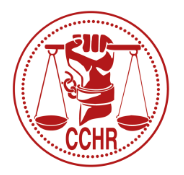One of the first questions that could be asked is: If children have to say “yes” to Ritalin and the effects of Ritalin, will they “Say No to Drugs” later in life? One might logically doubt it — that this would teach them to “Say No To Drugs”. And sure enough, studies show that Ritalin is being abused in public schools, and is a highly addictive drug, likened to cocaine. It is hard to put out a fire once it has started, and once “legal” drugs are introduced into a school system, they spread to illegal use. Thus one of the effects of Ritalin on children is to undermine this worthy campaign: “Say No To Drugs”.
Ritalin is prescribed for children who “misbehave” at home or in school, and prescriptions have increased exponentially in the past few decades – with millions now being medicated and suffering the effects of Ritalin. Should we suppose that in fact many children are labeled “disordered”; or instead wonder if perhaps normal children are being labeled incorrectly? The “misbehavior” that is being drugged is childhood behavior that, not too long ago, was considered normal by psychologists – short attention spans, restlessness, higher activity levels than adults, difficulty learning, etc. Unfortunately, many teachers have bought into this idea, that kids who don’t sit still and listen are disordered — a belief comfortably removing responsibility from their shoulders for engaging and interesting the children before them. Thus the effects of Ritalin on children must include the de-emphasis on teachers to improve teaching methods.
If drugs were the answer to the proper treatment of children, one would expect both literacy levels and tests scores to be improving. In fact they are not – both are sorely declining. The best teachers have always been those who actively interest and engage children, letting them explore and follow their interests. World-famous educator Maria Montessori did not advocate stationary desks, or rules that required children to sit still. In fact she railed against it, because healthy bodies and minds require freedom of movement, active interest, and fresh air. As a doctor and psychiatrist herself, she never used medications on children, but provided healthy meals and active learning equipment and materials in her Children’s Houses. It is quite certain that she would never advocate drugs that act as chemical restraints and which dull the mind, senses and spirit of the child.
Montessori observed children wanting to touch everything and attempted actively to learn to do things with their hands and bodies. Rather than label this “misbehavior” or “disordered”, Montessori recognized it as a survival instinct in children, who like immigrants entering a foreign land, have to learn, from scratch, all about their environment. The level of Montessori’s pre-school children exceeded that of older children in public schools, and brought officials and others to see her schools. After viewing them, visitors spoke of the rebirth of the human spirit – so glowing were these children. Compare this to the effects of Ritalin on children, which are quite the opposite: suppression of the spirit, reduction of sensory awareness, chemically dulling the children into sitting still and listening, if only subconsciously, all while learning their native language. In this light, it seems simple to choose which route better raises children’s awareness and abilities – the true purpose of our schools.
Free Baker Act Help - Call Us: 800-782-2878
info@cchrflorida.org


Having remedial teaching experience and a psychology degree, I agree that the effects of Ritalin on children are counterproductive to active, growing minds, and to active growing body health. A drug such as Ritalin replaces good teaching techniques such as Montessori’s with a pretense at educating children. Instead of engaging them and their interest, it enforces “good behavior” that takes the load off teachers, but cripples children mentally, and physically. It’s a shame.